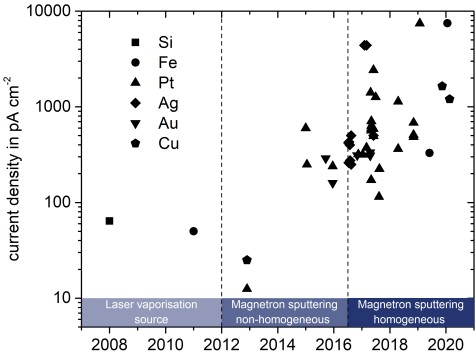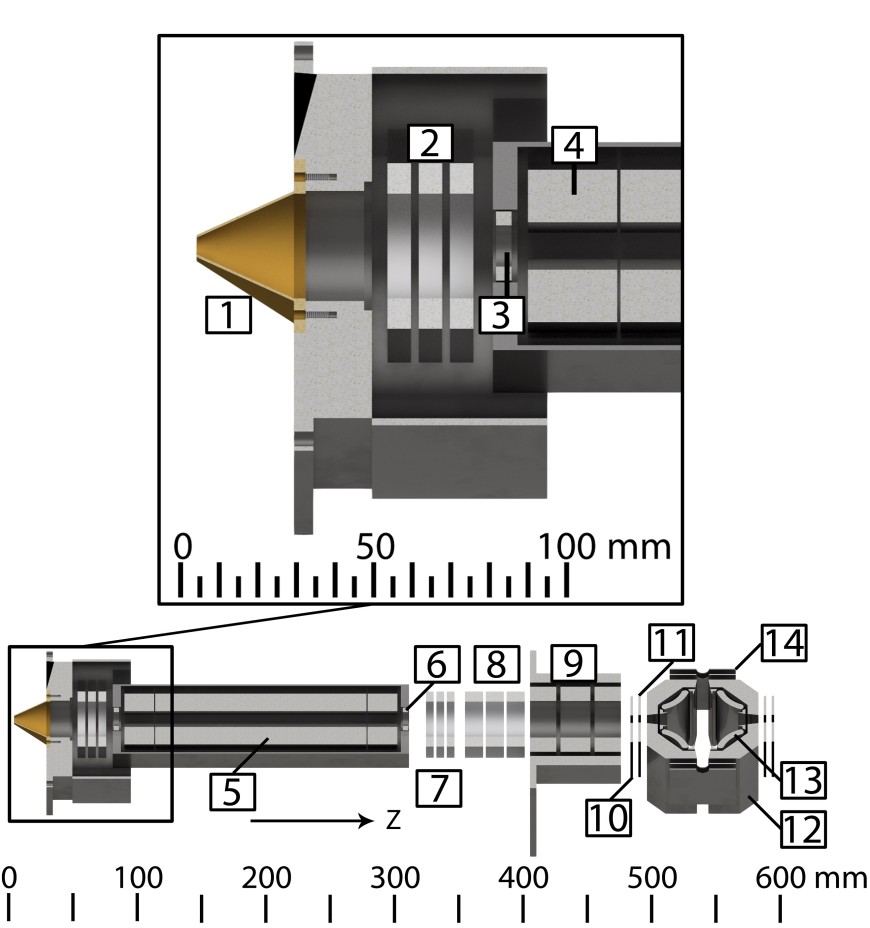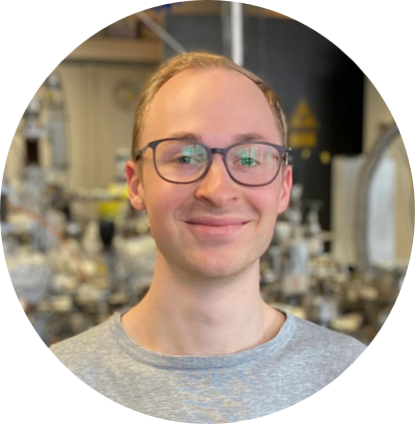Continuous molecular beam sources can be used for the deposition of discrete metal clusters. The magnetron sputtering source established by Krähling and Elger enabled the production of cluster surfaces, which could be investigated for the first time in the working group with respect to their physical and chemical properties. The continuous development of their components finally led to a significant increase in deposition rate and surface homogeneity. With the new high-intensity molecular beam source, the portfolio of depositable metals was significantly expanded. The following figure illustrates the development chronologically.
Literature
S. Krähling, Dissertation, Technische Universität Darmstadt, 2016.
B. Elger, Dissertation, Technische Universität Darmstadt, 2017.
The intensity and homogeneity of the molecular beam are crucial for fast and thorough cluster deposition. The aim is, of course, to deposit as many particles of a species as possible on the sample as they leave the source. This requires complex ion optics. To describe the ion optics, which consist of 14 different individual parts, Benjamin Elger performed simulations with the commercial software SIMION. The validated model was then coupled with a global optimization routine to improve both the operating voltages and the geometry of the setup. The calculations for this were carried out on Lichtenberg, the high-performance computer of the TU Darmstadt.
Literature
B. Elger, T. Schmidt, S. Krähling, F. Neuberger, R. Schäfer, Rev. Sci. Instrum. 2017, 88, 063303.
T. Schmidt, Masterthesis, Technische Universität Darmstadt, 2016.
Within the framework of the priority project 1613 of the German Research Foundation on solar water splitting with the development of alternative catalysts, platinum atoms as precursors to small clusters on n-doped silicon surfaces were investigated as model systems for end layers of current tandem solar cells. The analysis of the surfaces is mainly carried out by photoelectron spectroscopy in cooperation with the group of Prof. Jaegermann of material sciences at the Technical University Darmstadt, as well as the electron storage ring BESSY II at the Helmholtz Institute Berlin. Synchrotron-XPS investigations can be used to show, for example, that a previously anhydrous sample of platinum atoms on silicon is provided with hydroxide groups after the adsorption and desorption of water. This indicates a splitting of the water, which remains on the surface as hydroxyl groups. An effect which is not visible on a platinum-free surface.
Literature
J. Klett, B. Elger, S. Krähling, B. Kaiser, W. Jaegermann, R. Schäfer, App. Surf. Sci. 2016, 375, 85-89.
J. Klett, Dissertation, Technische Universität Darmstadt, 2016.








